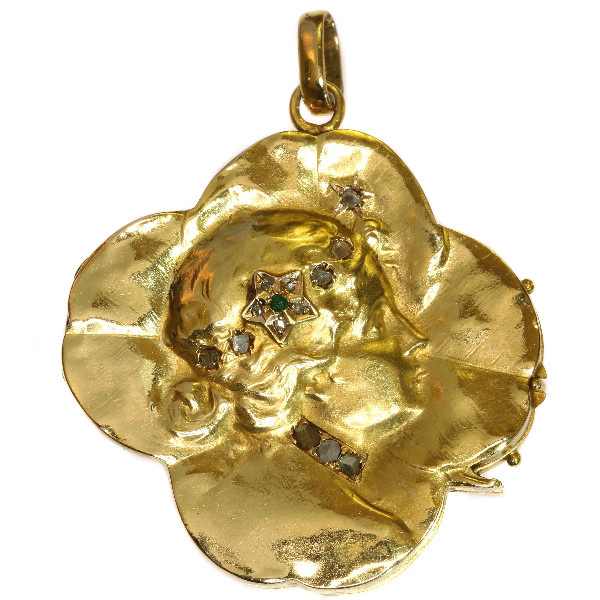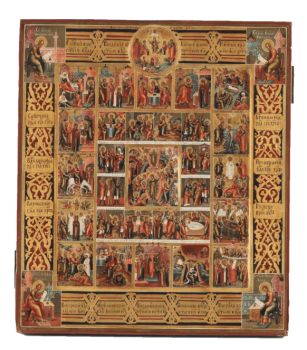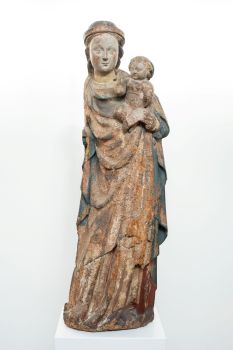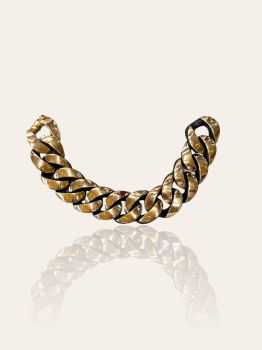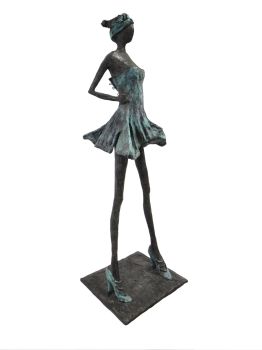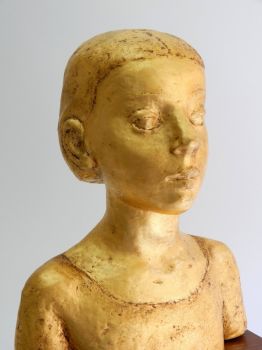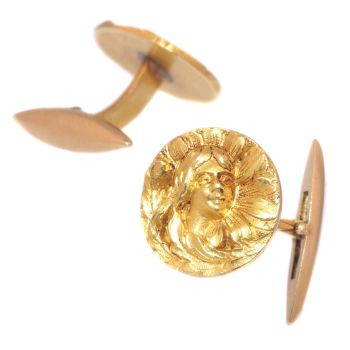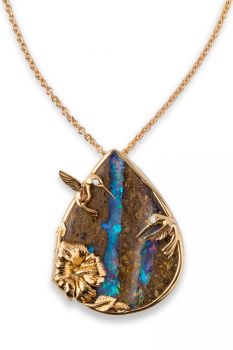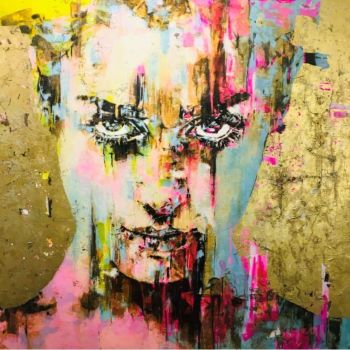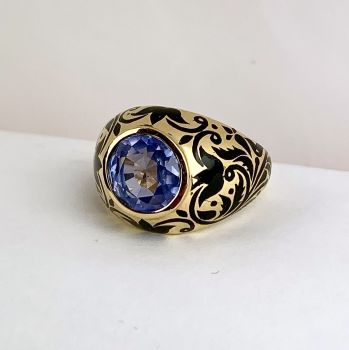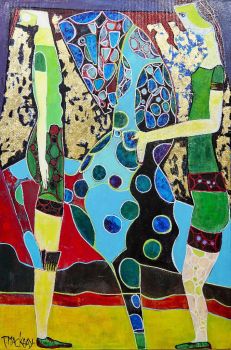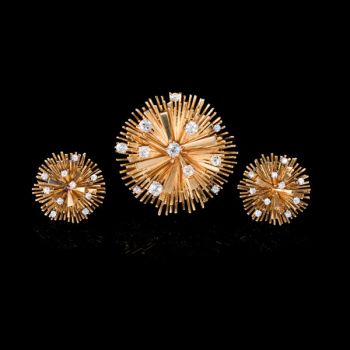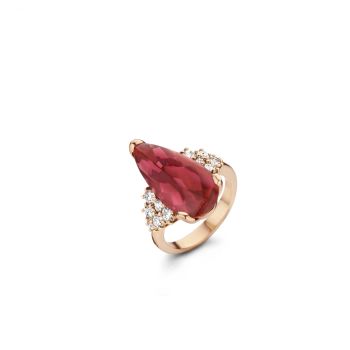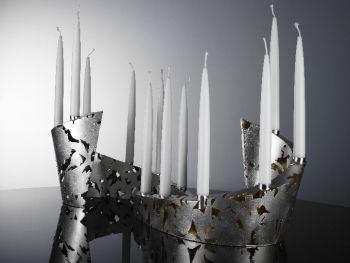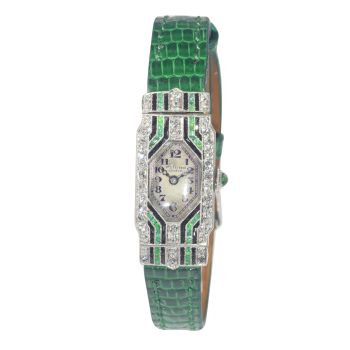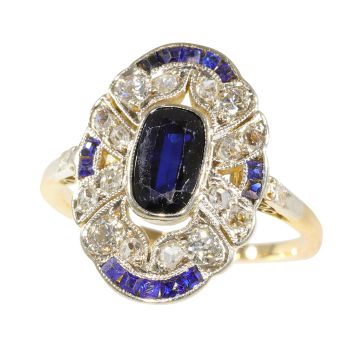Antiek Art Nouveau geluksbrenger medaillon met klavertje vier vrouwenhoofd 1900
Onbekende Kunstenaar
Goud
€ 3.200
Adin Fine Antique Jewellery
- Over kunstwerk
Antique jewelry object group: locket/pendant
Condition: excellent condition
- (more info on our condition scale)
Country of origin:Although it does not carry any legible control marks we believe this to be of Belgian origin.
Style: Art Nouveau - Art Nouveau (French for New Style) is an international movement and style of art, architecture and applied art - especially the decorative arts - that peaked in popularity at the turn of the 20th century (1890–1905).
The name "Art Nouveau" is French for "new art". It is also known as Jugendstil, German for "youth style", named after the magazine Jugend, which promoted it, and in Italy, Stile Liberty from the department store in London, Liberty & Co., whichpopularised the style, and in Holland as “Sla-olie-stijl”, Dutch for “salad oil style” after a advertisement poster for this product that was made in that style.
A reaction to academic art of the 19th century, it is characterized by organic, especially floral and other plant-inspired motifs, as well as highly stylized, flowing curvilinear forms. Art Nouveau is an approach to design according to which artistsshould work on everything from architecture to furniture, making art part of everyday life. Although Art Nouveau fell out of favour with the arrival of 20th-century modernist styles, it is seen today as an important bridge between the historicism ofNeoclassicism and modernism.
- See also: Art Nouveauor more info on styles
Style specifics: Art Nouveau - Although Art Nouveau took on distinctly localised tendencies as its geographic spread increase some general characteristics are indicative of the form. A description published in Pan magazine of Hermann Obrist's wall-hanging Cyclamen(1894) described it as "sudden violent curves generated by the crack of a whip", which became well known during the early spread of Art Nouveau.
Subsequently, not only did the work itself become better known as The Whiplash, but the term "whiplash" is frequently applied to the characteristic curves employed by Art Nouveau artists. Such decorative "whiplash" motifs, formed by dynamic,undulating, and flowing lines in a syncopated rhythm, are found throughout the architecture, painting, sculpture, and other forms of Art Nouveau design.(from: Wikipedia)
Period: ca. 1900
- (events & facts of this era, poetry of this era, fashion of this era)
Source of inspiration: flower symbolism
Theme: Four leaf clover - The clover became famous around 1,600 years ago, because, it was said that Saint Patrick in 452 AD stepped from the cathedral in Ireland on Easter morning, stooped down and picked a shamrock. He showed it to the crowd of parishioners, and then said, "This Plant represents the Father, the Son and the Holy Spirit!" Since that time, the three leaf shamrock has become world famous! Around this time when clovers were made popular, the rare four-leaf clover also became popular and wasconsidered to be lucky.
Material: 18K yellow gold
- (more info on precious metals)
Diamond(s): 13 senailles. A senaille is a simplified rose cut diamond, a small diamond chip with perhaps a few polished facets. We do not have the weight of these diamonds which is normal in our trade when it comes to senailles.
Precious stones: One emerald
Birthstones: Diamond is the birthstone (or month stone) for April and emerald for May.
- (more info on birthstones)
Hallmarks: No trace.
- (more info on hallmarks)
Dimensions: diameter Ø 3,74 cm (1,47 inch)
Weight: 10,30 gram (6,62 dwt)
Reference Nº: 17184-0258
Copyright photography: Adin, fine antique jewelry
- Over kunstenaar
Het kan voorkomen dat een kunstenaar of maker onbekend is.
Voor sommige werken is het niet te bepalen door wie het gemaakt is of dat het is gemaakt door (een groep) ambachtslieden. Voorbeelden zijn beelden uit de Oudheid, meubels, spiegels of handtekeningen die vaak niet duidelijk of leesbaar zijn. Maar ook sommige werken zijn helemaal niet gesigneerd.
Ook kunt u de volgende beschrijving vinden:
•"Toegeschreven aan …." waarschijnlijk een werk van de kunstenaar maar niet zeker of gedeeltelijk
•“Atelier van ….” of werkplaats van” een werk uitgevoerd in het atelier of atelier van de kunstenaar, eventueel onder zijn toezicht
•“Cirkel van ….” een werk uit de periode van de kunstenaar die zijn invloed laat zien, nauw verbonden met de kunstenaar maar niet noodzakelijkerwijs zijn leerling
•“Stijl van ….” of “Volger van ….” een werk uitgevoerd in de stijl van de kunstenaar, maar niet noodzakelijk door een leerling; kan eigentijds of bijna eigentijds zijn
•“Wijze van ….” een werk in de stijl van de kunstenaar maar van latere datum
•"Na …." een kopie (van welke datum dan ook) van een werk van de kunstenaar
•“Getekend…”, “Gedateerd….” of “Ingeschreven” dan is het werk gesigneerd/ gedateerd/ ingeschreven door de kunstenaar. De toevoeging van een vraagteken duidt op een element van twijfel
•"Met handtekening ...", "Met datum ...", "Met opschrift..." of “Draagt signatuur/datum/opschrift” dan is de handtekening/datum/opschrift toegevoegd door iemand anders dan de kunstenaar
Bent u geïnteresseerd om dit kunstwerk te kopen?
Related artworks
Onbekende Kunstenaar
UITGEBREIDE FEESTDAGENIKOON MET PASSIECYCLUS19th century
Prijs op aanvraagHeutink Ikonen
Onbekende Kunstenaar
Medieval Maria with child sculpture1450
Prijs op aanvraagRemco van Leeuwen Antiquair
Onbekende Kunstenaar
Series of 6 Chinese cups and saucers (Yongzheng period)1722 - 1735
Prijs op aanvraagKuipers Kunst & Antiek
1 - 4 / 12- 1 - 4 / 24
- 1 - 4 / 24
- 1 - 4 / 12


